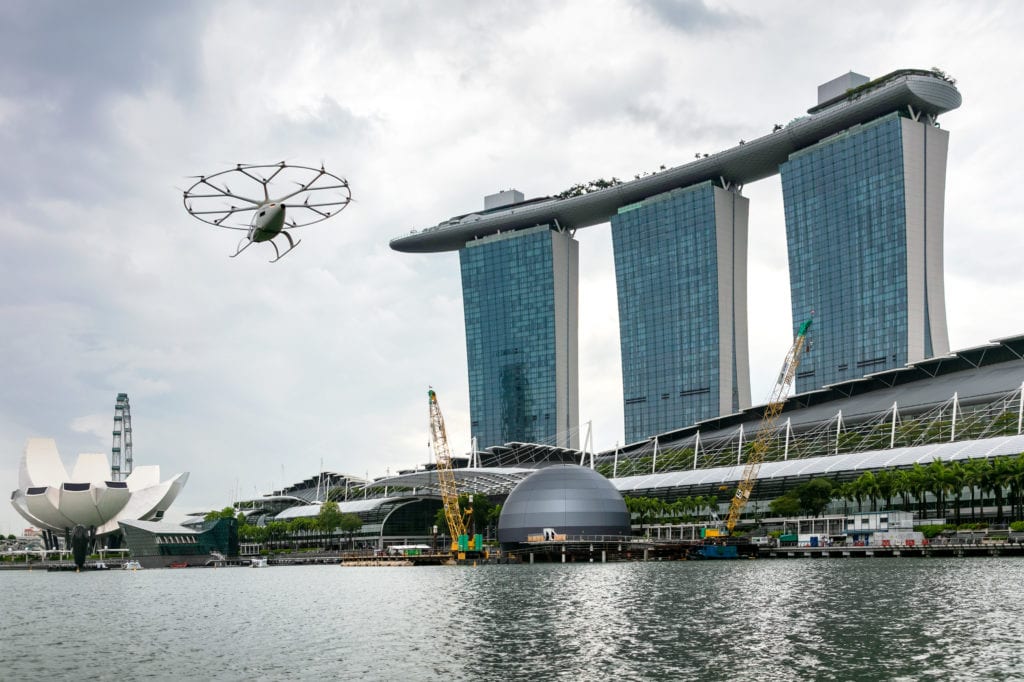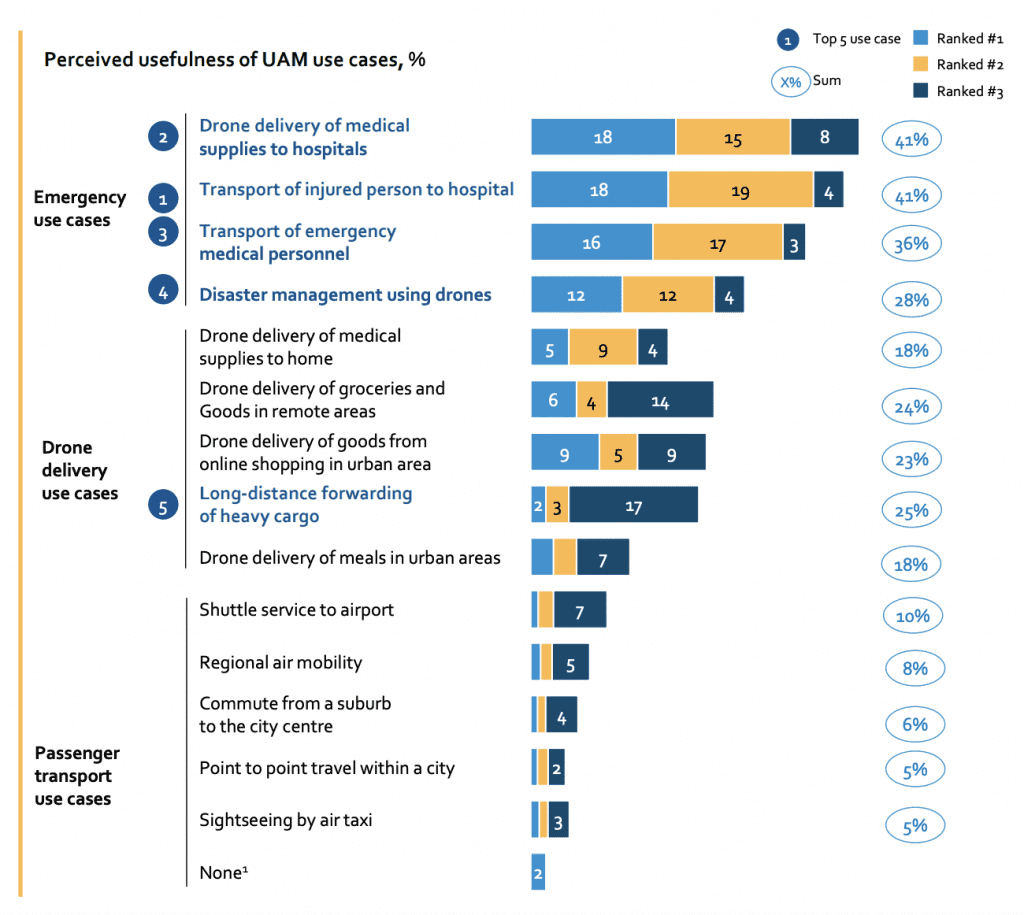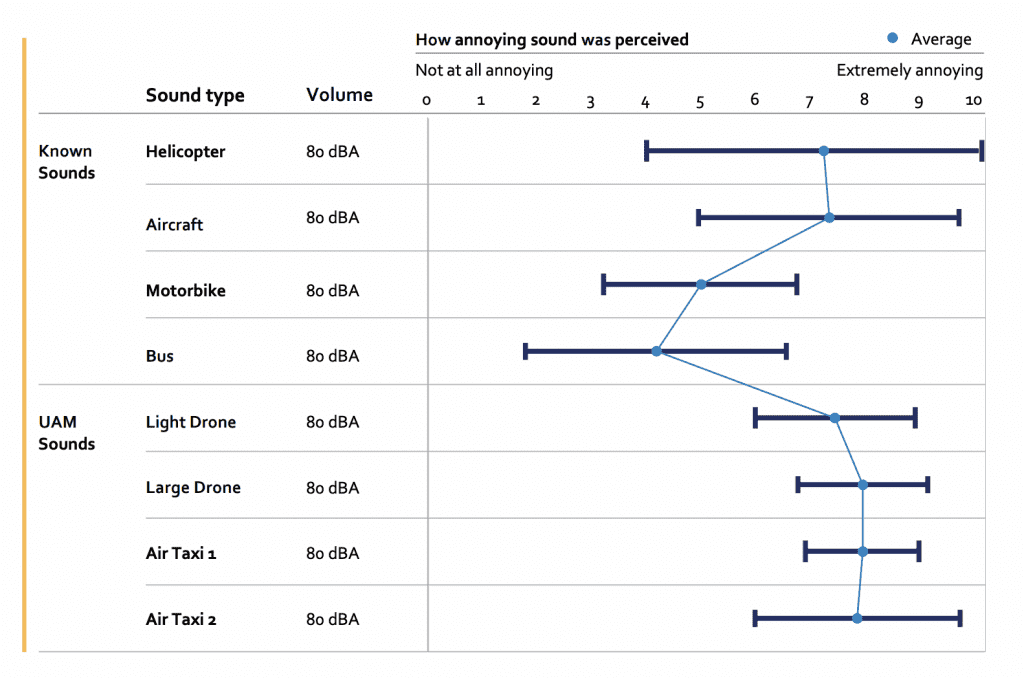EASA Releases First Study on Citizens’ Acceptance of UAM


Volocopter received the first company-wide approval from EASA to design eVTOL aircraft. (Photo: Volocoter)
Industry is undoubtedly excited about the prospect of urban air mobility (UAM) aircraft like drones and air taxis entering service in the next three to five years, however, these vehicles must also be accepted by everyday citizens whose lives they will be impacting. The European Union Aviation Safety Agency (EASA) published the results of a new study showing that the majority of European Union citizens surveyed welcomed UAM vehicles but showed reservations about safety, environment, noise, and security concerns.
“As a result of this study, for the first time, EASA and the EU have insights into what the general public in Europe thinks about this entirely new development in the field of aviation,” EASA Executive Director Patrick Ky said. “For EASA as a regulator this information is crucial. It will allow us to set up the rules and regulations for this area in a way that is aligned with the expectations and perceptions of citizens.”
EASA’s study included an online quantitative survey of 4,000 EU citizens in six urban areas, over 40 qualitative interviews, and a noise simulation test.

The vast majority of respondents were positive about UAM. (EASA)
“The study was conducted in six European cities, which offer the conditions for potential deployment of urban air mobility operations,” Ky said. “In order to select these cities, a detailed market analysis was conducted based on six use cases which are likely to come first…The most viable cities for each of these use cases were determined. This was done based on a KPI system individually set up for each use case, showing then for which city the respective use case is most viable. This helped to create a shortlist of 15 cities for each use case, resulting in a total of 90 cities. Finally, based off this short list of 90 cities, six cities were selected for a survey with the intent to cover all major European regions, different city archetypes and cultures.”
The study found that 83 percent of respondents had positive feelings about introducing UAM vehicles into the airspace. The results did not show any major deviation between the respondents of the different cities or according to age or household composition.
“The results also show that a large share of the population would also be interested to use UAM services: 64 percent of the respondents would be interested in using drone delivery and 49 percent would be interested in using an air taxi. 43 percent would be interested in using both, 71 percent are likely to make use of at least one service,” the study states.

Emergency use cases are expected to be most useful. (EASA)
Respondents showed strong support for using UAM vehicles in cases of public interest like medical or emergency transport. The study showed transporting an injured person to the hospital as the most important use case supported by 41 percent of respondents and drone delivery of medical supplies to hospitals as the second most important. Transporting emergency medical personnel and disaster management using drones were also in the top four use cases ranked by respondents.
“This indicates that use cases that are in general public interest, notably in the health and safety domains, would be better accepted than those fulfilling private and individual needs, such as sightseeing,” the study states. “Respondents confirmed however, that medical/emergency should meet the same safety or security standards as other use cases.”
The use of drones for delivery purposes garnered less support. The uses of drones to deliver heavy cargo over long distances came in fifth when ranked by respondents with 25 percent support.
Using UAM vehicles to transport passengers garnered the least support from respondents with all use cases receiving 10 percent or less support.
“While people transport only comes third in terms of importance, looking within the rankings of the different use cases, people favor longer connections so connecting more remote areas to in inner city connections,” Ky said. “So, people see more value in connecting remote areas within the transport use cases.”

Improved response time is clearly perceived as top benefit. (EASA)
The study showed that EU citizens expect UAM vehicles to provide faster, cleaner, and extended transportation. Respondents expected improved response times in emergencies to be the largest benefit with reduction of traffic jams ranked second and reduction of local emissions ranked third.
“71 percent of participants expected an improved response time in case of an emergency as major benefit,” according to the study. “The reduction of traffic jams ranked second (51 percent) on average, closely followed by an expected reduction of local emissions (48 percent). Better connection to remote areas (41 percent), and the creation of new jobs (32 percent) represented other perceived benefits.”

Respondents had similar concerns about delivery drones and air taxis. (EASA)
While respondents showed acceptance of UAM vehicles, they are still concerned about their safety, security, and environmental issues.
“We asked people to rank the concerns differentiated between drones and air taxis so we can identify differences,” Ky said. “We see, overall, the important concerns are all the same, but we see slight differences between drones and air taxis. For air taxis, safety, noise, and environmental concerns rank roughly the same. Obviously slightly different answers for drones. We can see, firstly, that noise is less important for drones. This is most likely as air taxis are larger and people expect more noise from air taxis than from drones. But what we can also see is that the security concern is around 10 percent higher for drones, which is also most likely as drones are unmanned and are controlled via a cyber link versus air taxis, I initially expect it to be manned and are more associated with regular aviation traffic.”
Respondents expect existing aviation safety levels to be the benchmark for UAM safety assessments. Simplified trade-off analysis found that respondents’ acceptance could be improved by 56 percent for drones and 49 percent for air taxis by implementing the highest levels of safety, noise, and visual pollution.
“We also found out that safety is really important, and that the existing safety standards are the benchmark for European citizens…But this only shows one part of the picture, when actually asking people in personal interviews, people responded that they sometimes forgot to mention safety because they just take it for granted, and when explicitly asking them about the safety level, they all clearly stated, unanimously, that they would expect the same levels of safety as every any existing aviation vehicles today,” Ky said.

Result comparison between familiar sound and Urban Air Mobility vehicle sounds at same maximum noise level. (EASA)

Noise perception at different distances. (EASA)
During the noise portion of the study, 20 participants were exposed to vehicle sounds played on top of a typic city background noise of about 55 dBA. Respondents were able to separate the noise from air taxis and drones from the sounds of helicopters, aircraft, motorbikes, and buses and showed a higher level of annoyance for UAM vehicles.
“People react very differently to urban air mobility noises,” Ky said. “With new urban air mobility sounds you can see that the reaction is much more averse. People are more annoyed by urban air mobility noises at the same sound level, but then when we look at reducing the sound by increasing the distance, you can see at around 65 dBA, the urban air mobility vehicle reaches around the same annoyance level as a bus or motorbike in a city.”
EASA will use the results of this study to create an impact assessment and regulatory proposal for UAM in Europe in 2022.
“In order to support public acceptance, urban air mobility introduction should be done gradually starting with pilot projects and routes to enable citizens to experience this new technology first and allow them to familiarize over time,” Ky said. “Use cases in the public interest such as emergency transport should clearly come first, as people see the largest benefits, and they could also then adopt gradually, which can foster acceptance for sustainable at scale operation. At the city level, services must be affordable for a large share of the public and well-integrated with the public transport infrastructure.”
The post EASA Releases First Study on Citizens’ Acceptance of UAM appeared first on Aviation Today.
Check FastApn access for commercial satcoms at Fastapn
Flytlink – Avionics, Satcom’s and IFE Consultants






